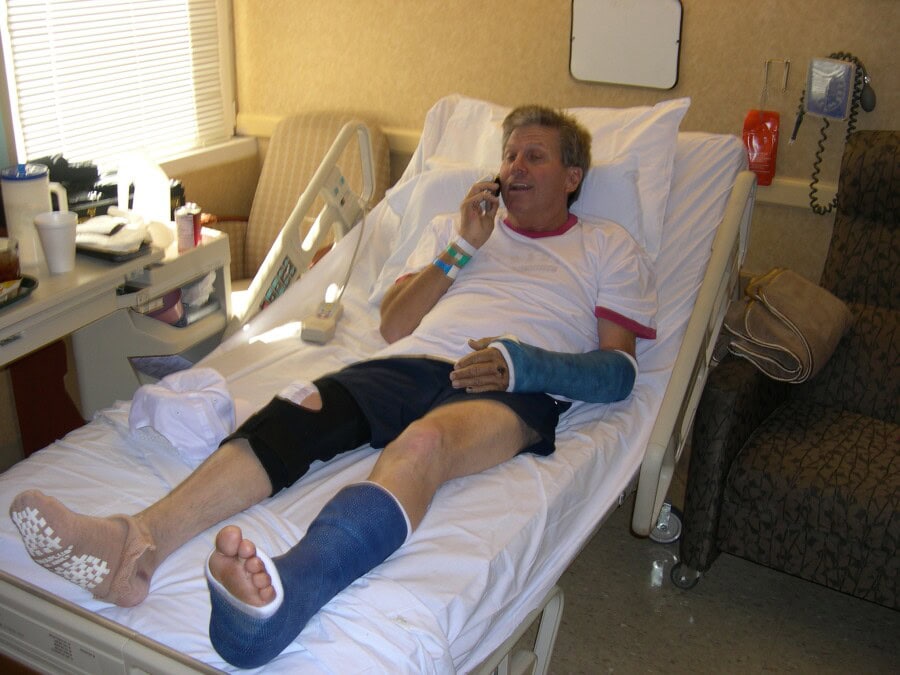
John Force, the legendary drag racer and 16-time NHRA Funny Car champion, has long been known for his resilience and tenacity both on and off the track. Following a harrowing 300 mph crash that resulted in a month-long hospital stay, Force’s recent statement—“I can feel significant improvement within my body; I shall handle the wheel soon”—offers a powerful glimpse into his recovery process and his unwavering determination to return to racing. This message, shared with visitors at his private residence in California, encapsulates not only his physical journey but also his indomitable spirit.
The Crash and Its Impact
John Force’s crash, occurring at a blistering 300 mph, was a stark reminder of the inherent dangers in drag racing. The accident, which took place during a high-stakes NHRA event, resulted in significant injuries that required an extended hospitalization. Force’s ability to survive such a severe crash speaks volumes about modern safety advancements in motorsports, as well as his own physical resilience.
Drag racing, known for its high-speed, high-risk nature, demands extraordinary skill and bravery from its participants. The impact of a crash at such speeds can be catastrophic, leading to a range of injuries that require meticulous and comprehensive medical treatment. For Force, the path to recovery was not only about physical healing but also about mentally preparing himself for a return to the sport he loves.
The Recovery Process
Force’s recovery from the crash was a multi-faceted process, involving extensive medical treatment, physical therapy, and psychological fortitude. The month-long hospital stay provided him with the necessary care to address his injuries and begin the healing process. During this period, Force’s focus would have been on managing pain, regaining mobility, and preparing for the next stages of rehabilitation.
1. Physical Rehabilitation: Regaining physical strength and mobility is crucial after such a severe accident. Force’s rehabilitation would have included physical therapy sessions aimed at restoring his range of motion, building muscle strength, and improving overall endurance. The goal of these sessions is to prepare his body for the physical demands of driving a high-speed race car.
2. Mental and Emotional Recovery: Recovering from a traumatic event like a high-speed crash also involves mental and emotional healing. Force’s statement about feeling significant improvement reflects not only physical progress but also psychological readiness. Facing the mental challenges of recovery, including overcoming fear and anxiety, is an integral part of preparing for a return to racing.
3. Medical Follow-ups: Regular medical evaluations and follow-up appointments would have been a key component of Force’s recovery. These appointments help ensure that his body is healing properly and that there are no complications. They also provide a platform for adjusting his rehabilitation plan as needed.
The Path Back to Racing
John Force’s statement about handling the wheel soon signifies his readiness to return to racing. His optimism and determination to get back behind the wheel demonstrate his passion for the sport and his commitment to his career. Returning to drag racing after such a severe crash involves several important steps:
1. Physical Readiness: Before resuming racing, Force would need to be physically fit and capable of handling the demands of driving at high speeds. This includes being able to endure the G-forces experienced during a run and having the strength and agility required for precise control of the vehicle.
2. Testing and Evaluation: Prior to returning to competitive racing, Force would likely participate in test runs to assess his readiness. These tests allow him to gauge his physical and mental preparedness in a controlled environment and to make any necessary adjustments to his approach.
3. Support System: Force’s return to racing would be supported by a team of medical professionals, coaches, and family members. Their support and encouragement play a crucial role in ensuring that he is ready to resume his career safely and successfully.
The Role of Resilience and Determination
John Force’s recovery and return to racing are emblematic of his resilience and determination. Throughout his career, Force has faced numerous challenges and setbacks, but his ability to persevere and overcome obstacles has been a defining feature of his success. His recent recovery from the crash is a testament to his character and his unwavering commitment to his sport.
1. Inspiration to Others: Force’s journey serves as an inspiration to both fans and fellow racers. His ability to bounce back from a severe accident and continue pursuing his passion highlights the importance of resilience and determination in achieving one’s goals.
2. Legacy of Excellence: Force’s return to racing would further cement his legacy as one of the greatest drag racers of all time. His career is characterized by remarkable achievements and a relentless pursuit of excellence, and his comeback would be a continuation of that legacy.
3. Advancement of Safety Measures: Force’s crash and recovery also highlight the advancements in safety measures within drag racing. His experience underscores the importance of ongoing innovation and improvements in safety technology to protect drivers and ensure their well-being.
John Force’s statement about feeling significant improvement and his intention to handle the wheel soon embodies the essence of resilience and determination. His recovery from a 300 mph crash, marked by a month-long hospital stay, showcases not only the physical and emotional challenges of returning to competitive racing but also his unwavering commitment to the sport. Force’s journey reflects his passion for drag racing and his remarkable ability to overcome adversity, serving as an inspiration to many and reinforcing his status as a legendary figure in the world of motorsports.








